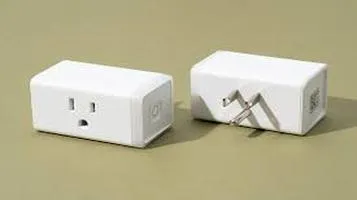LED String Lights: Illuminating Spaces with Elegance and Efficiency
LED string lights are a versatile and energy-efficient lighting option perfect for enhancing any space, whether indoors or outdoors. Comprising tiny light-emitting diodes mounted on a flexible wire, these lights offer both durability and low energy consumption, making them an eco-friendly choice. Available in various colors, shapes, and sizes, LED string lights can cater to diverse aesthetic preferences, from a warm, cozy ambiance to a vibrant, festive atmosphere. They are ideal for decorating during holidays, weddings, or parties, and can also add a touch of charm to everyday home settings, such as bedrooms, patios, or gardens. Their long lifespan and minimal heat emission ensure safety and longevity, making them a reliable choice for continuous use.

In the ever-evolving world of home and event decor, LED string lights have carved out a unique niche for themselves, blending aesthetic appeal with practical functionality. These versatile lighting options are now a staple for everything from cozy indoor ambiances to vibrant outdoor festivities. After extensively using a set of LED string lights for various purposes, here's an in-depth look at their features, benefits, and a few minor drawbacks.
Features and Design
1. Aesthetic Appeal:
One of the most striking aspects of LED string lights is their ability to transform any space into a visually captivating environment. Available in a plethora of colors, sizes, and designs, these lights cater to all tastes and themes. Whether you prefer the classic warm white glow or a more festive multicolor display, there's an option to suit your needs.
2. Versatility:
LED string lights are incredibly versatile. They can be draped over furniture, wrapped around trees, strung along fences, or even used to create intricate patterns on walls or ceilings. This flexibility makes them a popular choice for holidays, weddings, parties, and everyday home decor.
3. Durability and Weather Resistance:
Many LED string lights are designed with outdoor use in mind, boasting features such as waterproof casings and weather-resistant materials. This ensures they can withstand various environmental conditions, from rain to snow, making them ideal for year-round use.
4. Energy Efficiency:
LED technology is renowned for its energy efficiency. Compared to traditional incandescent bulbs, LED lights consume significantly less power, which translates to lower electricity bills and a reduced environmental footprint. This is particularly beneficial when lights are used extensively or left on for prolonged periods.
5. Longevity:
LED bulbs have an impressive lifespan, often lasting up to 50,000 hours. This long operational life means fewer replacements and less maintenance, offering excellent value for money in the long run.
Performance
1. Brightness and Clarity:
The brightness of LED string lights is commendable. They provide a clear, consistent light that enhances visibility without being overly harsh. The ability to choose different brightness levels and color temperatures allows users to create the perfect ambiance for any occasion.
2. Customization:
Many modern LED string lights come with remote controls or smartphone apps that allow for easy customization. Users can adjust brightness, switch colors, set timers, and even create dynamic lighting effects such as fading, twinkling, or color cycling. This level of control adds a fun, interactive element to lighting design.
3. Easy Installation:
Setting up LED string lights is generally straightforward. Most sets come with user-friendly instructions, and the lightweight design makes them easy to handle and install. Some models include hooks, clips, or adhesive pads, further simplifying the process.
Pros
1. Energy Efficiency:
The low power consumption of LED lights makes them an eco-friendly choice. They use up to 80% less energy than traditional bulbs, reducing both electricity costs and carbon emissions.
2. Long Lifespan:
With a lifespan that can exceed 50,000 hours, LED string lights offer durability and reliability. This longevity means fewer bulb replacements and long-term savings.
3. Safety:
LED lights generate very little heat, reducing the risk of burns or fires. This makes them safer for use around children, pets, and flammable materials.
4. Versatile Applications:
From holiday decorations to permanent fixtures, LED string lights are suitable for a wide range of applications. Their adaptability and aesthetic appeal make them a favorite for both personal and commercial use.
Cons
1. Initial Cost:
While prices have come down significantly in recent years, LED string lights can still be more expensive upfront compared to traditional incandescent lights. However, the long-term savings in energy costs and bulb replacements often justify the initial investment.
2. Potential for Malfunctions:
Like any electronic device, LED string lights can experience malfunctions. Common issues include flickering, color inconsistencies, or sections of the string failing to light up. It's essential to purchase from reputable brands and check warranties to mitigate these risks.
3. Limited Repair Options:
When LED string lights do malfunction, repairs can be challenging. Unlike traditional bulbs that can be easily replaced, individual LEDs are often integrated into the string, making DIY fixes more complicated.
Conclusion
LED string lights are a fantastic addition to any decor toolkit, offering a delightful blend of beauty, efficiency, and versatility. Their ability to create enchanting atmospheres while being environmentally friendly and cost-effective makes them a popular choice for various settings. While there are some minor drawbacks, such as initial cost and potential malfunctions, the benefits far outweigh these concerns. Overall, LED string lights are a smart investment for anyone looking to enhance their living space or create memorable events with elegant and efficient lighting solutions.
---
This comprehensive review covers various aspects of LED string lights, providing a balanced perspective on their advantages and potential drawbacks.






